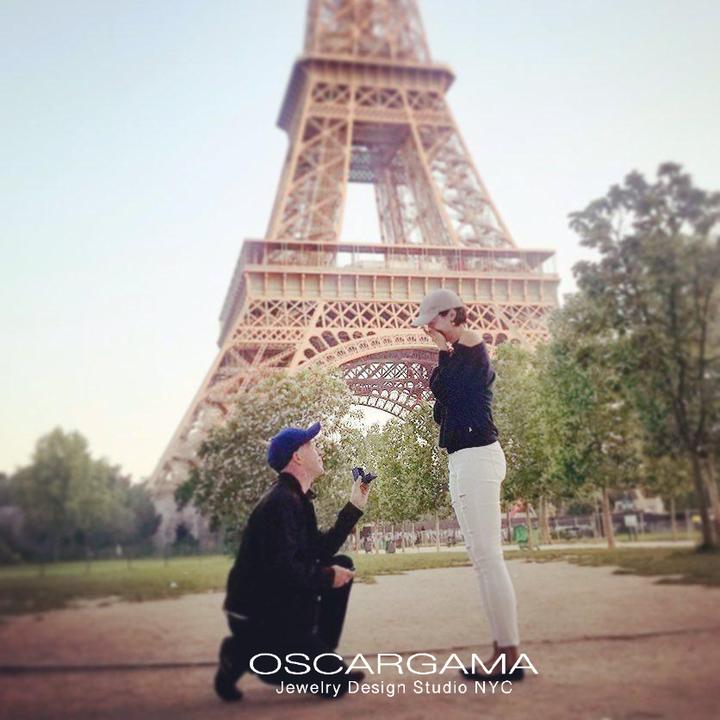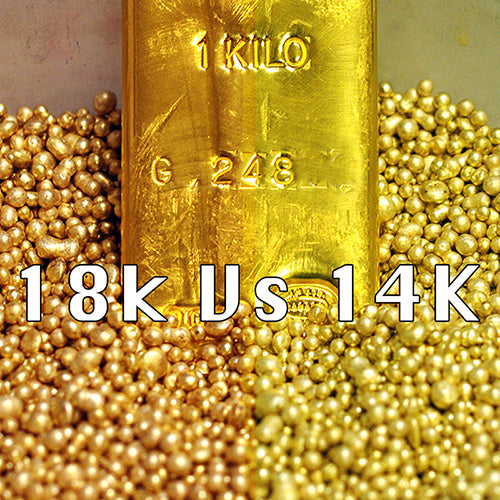NATURAL EARTH-MINED DIAMONDS

Diamond is the most concentrated form of pure carbon in the natural world and the strongest mineral on Earth. The secret to diamond’s superior strength is found on the molecular level. Formation of diamonds requires four key ingredients: carbon, pressure, heat and time. When it comes to heat and pressure, at least 752 degrees Fahrenheit and 434,113 pounds per square inch. Prime diamonds are located about 100 miles (160 kilometers) underground in the Earth’s mantle. Volcano eruptions of magma propelled natural diamonds closer to the Earth’s surface. Most of the diamonds are found in Africa, Russia and lately in Canada. The process of digging diamonds is very expensive and can be dangerous. Once they are dug out, diamonds must be sorted, cut and polished to bring out their luster.
Diamond quality is classified by the 4Cs: Color, Clarity, Cut and Carat. Each of these attributes will decide the value of a diamond. Most of the price depends on the clarity and thee color of the stone. Carat is also a big factor. The larger the stone the rarest it is so value goes much higher in stones 3ct and up.
DeBeers was the first company that promoted diamonds commercially setting up the standards in prices until now.
Diamonds can be Certified by GIA (Gemologial Institute of America) for a premium price or available without a certificate. You can easily find more information on the 4Cs by doing a Google search.
Lab Grown Diamonds (Lab cultured, man made diamonds)
Lab grown diamonds--unlike CZ and other stimulants--are REAL diamonds.

Lab grown diamonds have nearly the same physical and optical properties of natural diamonds. They also share the same chemical composition with natural earth diamonds. It is virtually impossible to distinguish with the naked eye between a natural or a lab grown and requires special equipment to identify them one from another.
They are as beautiful and they are available in a range of colors and qualities. Just like natural diamonds, they come in an arrange of shades from D (very white) to J (yellow hue), they also have inclusions and they can also have an excellent cut—and, therefore, excellent fire, brightness and scintillation—or they can have a poor cut or anything in between just like with earth mined diamonds. It all depends on the quality of the diamond and the skill of the cutter.
While natural diamonds may take billions of years to form, lab grown diamonds can be grown in a matter of weeks! It is quite impressive how technology has advanced and this is a relatively new market.
Lab grown diamonds are produced in a variety of ways. HPHT (high pressure high temperature) or CVD (chemical vapor deposition) The supplier we have chosen for lab grown diamond is CVD process and will be described here:
With this newer technique, synthetic diamonds are grown in an apparatus that uses moderate temperatures and very low pressures in a vacuum chamber. The CVD process involves heating a mixture of a hydrocarbon gas (such as methane) and hydrogen, which releases carbon atoms that then settle onto the cooler, typically square-shaped seed plate of natural or, more likely, synthetic diamond. This results in a square-shaped, tabular synthetic diamond crystal. Once the crystals are made they are fashioned the same way that a natural diamond is fashioned to bring the sparkle to life. CVD diamonds and Natural Diamonds look exactly the same next to another and even a professional jeweler could not tell the difference since both stones share the same attributes and chemical composition. In order to tell one from the other it is necessary special laboratory machines created for this use. CVD diamonds are priced 30% to 40% lesser than natural diamonds and just like Natural Diamonds they are priced depending on their 4Cs characteristics: Color, Clarity, Carat and Cut.
Lab grown diamonds are certified in their majority by IGI (International Gemological Institute)
MOISSANITES

Over 120 years ago, during a search for efficient electrical conductors, Nobel Prize-winning chemist Dr. Henri Moissan discovered Moissanite (silicon carbide) in a meteorite crater. He resolved to find a way that science could reproduce this rare mineral, which held such promise in the development of diverse products that included semiconductors, LED lighting and extremely hard drilling tools and abrasives.
After years of experimentation, researchers from the Research Triangle Park in North Carolina developed and patented a process for creating pure silicon carbide (SiC). Moissanite is much closer to diamond in overall appearance and heft than any previous diamond imitation. They are very strong and durable 9.25 in the scale of MOHs, Diamond being a 10.
Like diamonds, Moissanite is also available in different shapes. Those who select Moissanite instead of a diamond also can be assured that the stone will be safe for daily wear. While no gemstone can replicate a diamond’s hardness, Moissanite comes incredibly close. Although a diamond is a 10 on the MOHs scale of hardness,Moissanite is a 9.25.
The colorless, clear beauty and sparkling fire of Moissanite allows the stone to be the ideal substitute for buyers who want the look of diamonds without higher cost of a Natural Diamond or a CVD. There are many companies producing Moissanites but the leading company in distribution and quality is Charles and Colvard with their colorless line DEF Forever One. I have chosen this supplier for all of my certified Moissanite products.
Any of this stones will make a beautiful engagement ring. Wether is vintage inspired or classic halo ring the three stones will shine and create a beautiful piece as a symbol of your love. The most important part when doing engagement ring is to select a budget and find out what your girlfriend's preference is. You know what they say. "Happy Wife = Happy Life"
Good luck in your search and feel free to view some of my JEWELRY COLLECTIONS in Vintage Inspired Jewelry with lab Grown diamonds, Natural diamond and Moissanites. also check my ETSY SHOP to see some of my inventory.




